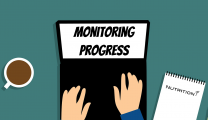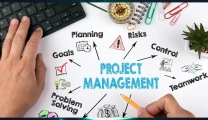There has been growing interest in the following questions: what lies ahead for project management as a discipline? What is the future of project management? How will it evolve from its existing state of elaborate approaches and frameworks? Who will be the flag bearer to integrate new ideas and concepts into the body of knowledge to keep it fresh and relevant and help deal with projects of varying size and complexities in the future? Who will take a leadership role to provide vision and foresight to help project management evolve? There are many questions to ponder.
Often, we get to hear that project management processes and standards have become all too structured and well-architected. While every project is unique in many different ways, requiring some form and level of tailoring and subtle refinements of processes, practices, and techniques throughout the project lifecycle, the evolution and identification of new processes, practices, methodologies, and tools and techniques are slow and unnoticeable.
The widely used techniques such as the Gantt Chart, Network Diagram, and Work Breakdown Structure (WBS) were created roughly 70 years ago. It seems there aren’t many techniques that can replace these well-established foundations for planning and implementation. In hindsight, it points to the slow pace of evolution and developments in the project management discipline as a whole. Agile methodologies are gaining momentum, but their use is not suited or not aligned to projects executed in every domain, e.g., construction.

While using best practice guidelines is a sensible strategy, the question is: how many projects are executed based on these guidelines? It may be that practitioners find the best practice guidelines too sophisticated and complex to use. Or, it may be that best practice guidelines are not universally applicable to projects’ contexts and varieties. No practice is best, as one cannot define what is best in absolute, unquestionable terms.
Another reason for this predicament could be that the value proposition of using best practices is not well articulated. People may not know the relationship between using best practices and the impact they have on the outcome/success of projects. The problem is highlighted in a blog on the APM website, as Godbold (2015) notes ” …. best practice can be dangerous and as Mary McKinlay says, there is no such thing! What others do is right for their context but may not translate into yours. At its best it is used to learn and develop, at its worst, it is used verbatim, assuming it will make them as good as the best.”
The situation presents an opportunity for project management professionals belonging to various walks of life and fields of professions to sit together and come up with an agenda for the future of project management. Experts, practitioners, academics, researchers, institutions, and policymakers need to seize this opportunity and combine their efforts and foresight to develop a sustainable agenda for further developments in project management. Certainly, the path of co-creation is the path to follow. However, before embarking on any changes, a host of things need to be considered to find the path to the future, such as:
- What needs to be changed?
- Why is the change process slow?
- What should be the priority for change?
- Will the change be beneficial?
- How will change be implemented across the board?
- What is the minimum common agenda for change that will be acceptable to all stakeholders?
- Or should there be no change and we just maintain the status quo?
Once it is established what needs to be changed and in what manner and quantity, then it may be prudent to take a staggered approach to bring changes. Some of the areas that need solid thinking for change are:
- Definition and measurement of project value propositions
- Baseline variation capture, measurement, and troubleshooting
- Cognitive, artificial intelligence, social media, big data analytics and other technological integrations and formalization of use in project management
- Resilience-focused project management approaches and methods
- Easy agile (that can be used across a wide range of project types)
- Traditional project management benefits vs. area of improvements
- Project management with no plans (flexible methodologies and approach to delivering projects).
Conclusion:
Evolution is a natural process. All entities evolve, including individuals, organizations, professions, and societies. Project management is no exception. Given the strategic role that project management plays in the growth of organizations and societies, its continuous evolution seems a necessity. With that in mind, above we have presented a viewpoint to ponder over with the hope that it will add to the evolution process. Naturally, the areas for evolution that have been mentioned above are non-exhaustive. Hence, more thought is needed to come up with a comprehensive list of areas of focus to make them part of a staggered plan for project management evolution.












Replies to This Discussion